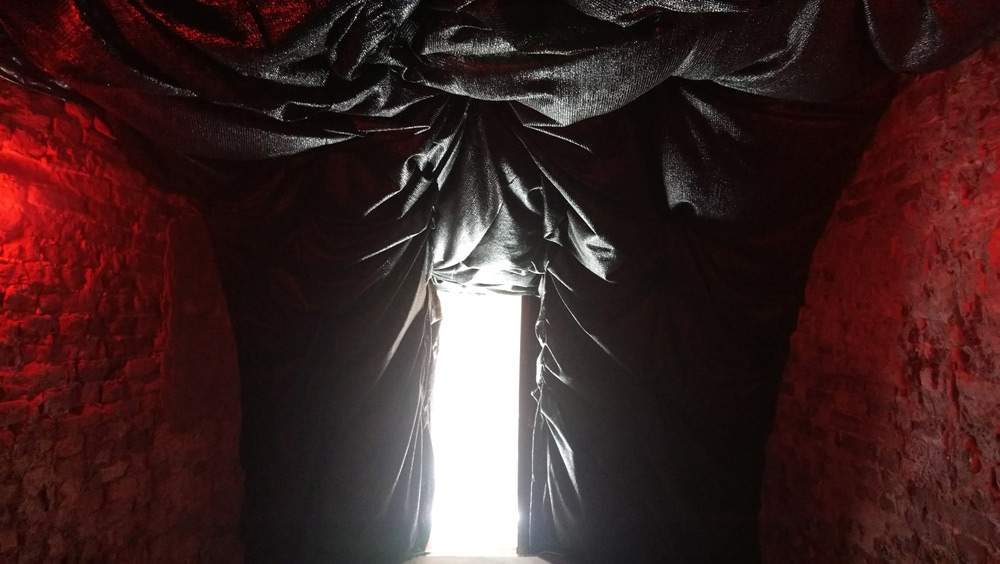Venice Biennale 2019, Mongolia Pavilion with exhibition and traditional throat singing
The Mongolia Pavilion at the fifty-eighth edition of the Venice Biennale features an interdisciplinary project entitled A temporality, curated by Gantuya Badamgarav with the collaboration of Carsten Nicolai, better known as Alva Noto: for its third participation in the Venetian exhibition, the Asian country brings to the Lagoon sculptural installations by artist Jantsankhorol Erdenebayar, aka Jantsa, and an interactive sound performance of traditional Mongolian throat songs, accompanied by German artist and composer Carsten Nicolai, aka Alva Noto.
The ancient Mongols always maintained a nomadic lifestyle in which the development and accumulation of tangible creations, such as literature and art, were limited by the pastoral lifestyle, which required constant movement. Because of this limited context, oral traditions emerged and evolved as the main means of expression and were passed down through the generations. With the passage of time, oral expression techniques acquired unique and complex forms, which are now recognized by UNESCO as an intangible cultural heritage of humanity. Originally, Mongols practiced throat singing as a means of communicating with their inner selves, the environment around them and the animal world. The sounds differed according to the environment and the more or less evolved minds, bodies and spirits of the people who emitted them. Nowadays, the interaction between humans and nature is drastically attenuated, and on the contrary, man-made environments have been superimposed on centuries of natural relationships, resulting in concrete blocks, glass, panels and asphalt becoming the focal points of interaction.
Keeping in mind this alteration and previous works by artist Jantsa, which have focused on the transformations and adjustments between living and nonliving things, curator Gantuya commissioned the artist to create sculptural installations that would dialogue with the cramped, interconnected brick-walled rooms of the old Venetian house in Calle del Forno where the Mongolian pavilion has been set up. He also invited Alva Noto to join the project and perform together with the Mongolian singers to transform and translate the ancient tools of oral expressions into a contemporary art form by interacting with the space created by Jantsa.
Born into a family of artists, Jantsa graduated from Hunter College in New York and is currently completing the MFA program at the University of California, Los Angeles, California. Deeply aware of his roots, Jantsa has always been fascinated by Mongolian tales, riddles, proverbs, and the intellectual and communicative mental structures that were constructed by his predecessors. He investigates the transformations of taboos, rituals, superstitions and socially constructed customs and creates a dialogue between past and present. Juxtaposing contemporary works with the spirit of the old Venetian house, Jantsa’s sculptural installations will offer viewers moments of fleeting oblivion and reminiscence, in which artists can interact with the space and objects, and create performances by emitting abstract sounds using traditional throat singing techniques and electronic music. The sounds will be installed in the exhibition space during the International Art Exhibition La Biennale di Venezia.
A Temporality aims to impose the idea of the ephemeral within our perceptions, seeking to evoke a mixture of forms, materials and sounds that seeks to question socially constructed mentalities and investigate different forms of resistance.
Pictured is the Mongolia Pavilion, interior. Ph. Credit Finestre Sull’Arte
 |
| Venice Biennale 2019, Mongolia Pavilion with exhibition and traditional throat singing |
Warning: the translation into English of the original Italian article was created using automatic tools. We undertake to review all articles, but we do not guarantee the total absence of inaccuracies in the translation due to the program. You can find the original by clicking on the ITA button. If you find any mistake,please contact us.




























